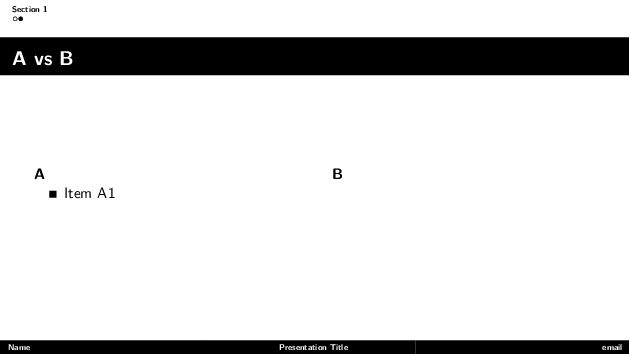Incremental slides do not work with a two-column layout
It is a bit of a hack but you could use the template feature of remarkjs coupled with --.
-- tells remarkjs to use the previous slide as a template. In a template you could use {{content}} to tell where to put the next content. If you don't, it is append at the end of the template. it is why -- is used for incremental slide.
As explained in other answer, you cannot use -- inside a .class[] call as it isn't a template then. However, you can use {{content}} inside .class[] so that using -- after will put the next text inside your previous .class[].
It is a bit of a hack because I don't think it will work with complicated incremental logic.
---
title: "Title"
author: "Myself"
date: "`r format(Sys.Date(), '%d.%m.%Y')`"
output:
xaringan::moon_reader:
css: ["default"]
nature:
highlightStyle: dracula
highlightLines: true
countIncrementalSlides: false
---
```{r setup, include=FALSE}
options(htmltools.dir.version = FALSE)
```
.left-column[
## Left column title
]
.right-column[
A whole sentence
+ one `Markdown` bullet point
{{content}}
]
--
+ a second bullet point
{{content}}
--
+ a third bullet point
{{content}}
--
+ a sub level
in the previous exemple, the right column has text appearing incrementally.
Incremental content do not work inside div
Try this:
---
title: "Incremental in Div"
output:
xaringan::moon_reader:
encoding: 'UTF-8'
self_contained: false
css: ['default', "style.css"]
---
.pull-left-50[
- Point 1
{{content}}
]
--
- Point 2
{{content}}
--
- Point 3
{{content}}
--
- Point 4
{{content}}
--
- Point 5
--
.pull-right-50[
- Point 6
{{content}}
]
--
- Point 7
{{content}}
--
- Point 8
{{content}}
--
- Point 9
{{content}}
--
- Point 10
Two column incremental beamer slide in RMarkdown
You could do the overlays manually:
---
title: "Presentation Title"
author: "Name"
institute: "Institute"
date: "date"
output:
beamer_presentation:
keep_tex: true
incremental: true
includes:
in_header: preamble.tex
theme: "Berlin"
colortheme: "dove"
fonttheme: "structurebold"
classoption: "aspectratio=169"
---
# Section 1
## A vs B
::: columns
:::: column
### A
\begin{itemize}
\item<1-> Item A1
\item<3-> Item A2
\end{itemize}
::::
:::: column
### B
\begin{itemize}
\item<2-> Item A1
\item<4-> Item A2
\end{itemize}
::::
:::

Spacing changes when using xaringan with ninjutsu and going from a list with one bullet point to two bullet points
You have such inconsistent space because you are adding extra space between two bullet points, which leads to wrap the texts A test and B test with paragraph html element p and ninjutsu.css contains the following line for styling the paragraph element.
.content > h1, h2, h3, p { padding-left: 2%;padding-right: 2%; }
So when you are writing a single bullet point, that is not getting wrapped with p but in the next slide when you are writing two bullet points with an extra space between them they are getting wrapped with p and therefore, getting 2% left and right padding. And hence the problem.
But in default xaringan (in default.css) there's no such style rule for paragraph elements in slide content class. That's why, in the base case, there's no such space inconsistency.
Solution
Now a possible solution could be to overwrite the css rule for p elements inside the list elements li and write your own rule for the desired padding (vertical and horizontal), which will work for both the below cases,
- A test
- B test
Or
- A test
- B test
Rmarkdown file
---
title: "Test of bullet alignment"
output:
xaringan::moon_reader:
css: ["default", "ninjutsu"]
---
```{css, echo=FALSE}
li p {
display: inline !important;
padding: 0px !important;
}
li {
padding: 6px 3px;
}
```
### This is non tight list (with space between items)
- A test
---
###This is non tight list (with space between items)
- A test
- B test
---
### This is tight list (with no space between items)
- A test
---
### This is tight list (with no space between items)
- A test
- B test
two-column layouts in RStudio presentations/slidify/pandoc
I now have what I think is a reasonable solution that should apply at least to ioslides-based solutions, and maybe (?) to other HTML5-based formats. Starting here, I added
<style>
div#before-column p.forceBreak {
break-before: column;
}
div#after-column p.forceBreak {
break-after: column;
}
</style>
to the beginning of my document; then putting <p class="forceBreak"></p> within a slide with {.columns-2} breaks the column at that point, e.g.
## Latin hypercube sampling {.columns-2}
- sample evenly, randomly across (potentially many) uncertain parameters
<p class="forceBreak"></p>

[User:Saittam, Wikipedia](https://commons.wikimedia.org/wiki/File:LHSsampling.png#/media/File:LHSsampling.png)
There may be an even better way, but this isn't too painful.
@ChrisMerkord points out in comments that
.forceBreak { -webkit-column-break-after: always; break-after: column; }
worked instead (I haven't tested ...)
Related Topics
Display the Image in the Center of the Page
Lesscss - Use Calculation and Return Value
CSS Image Scaling to Fit Within Area Not Distort
CSS Transparent Border Problem in Firefox 4
What Is the Alternate for -Webkit-Print-Color-Adjust in Firefox and Ie
HTML Special Characters in CSS "Content" Attribute
Pagespeed Caching CSS, Annoying to Develop
Drawing Animated Arc with Pure CSS
Styling of Select2 Dropdown Select Boxes
Less Compile Error Parseerror: Syntax Error on Line 1
Styled Component Styles Are Disabled in Chrome Devtools
How to Not Use <Div Class="Clear"> in Markup
Show Google Picker Inside/Over Modal
Css: Background Position with Repeat
The Scrolling Attribute on the Iframe Element Is Obsolete. Use CSS Instead
Differences and Similarities Between Svg and CSS3 Animations